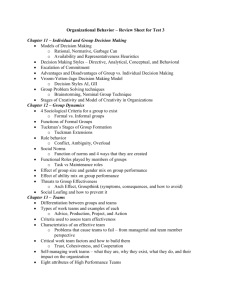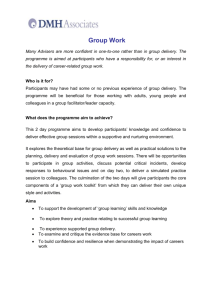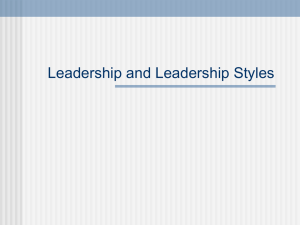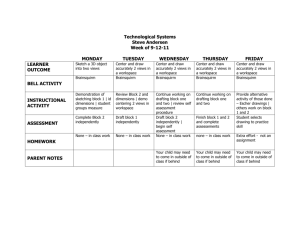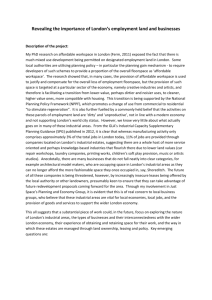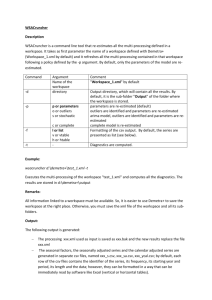Week 2 CC BS 131113
advertisement
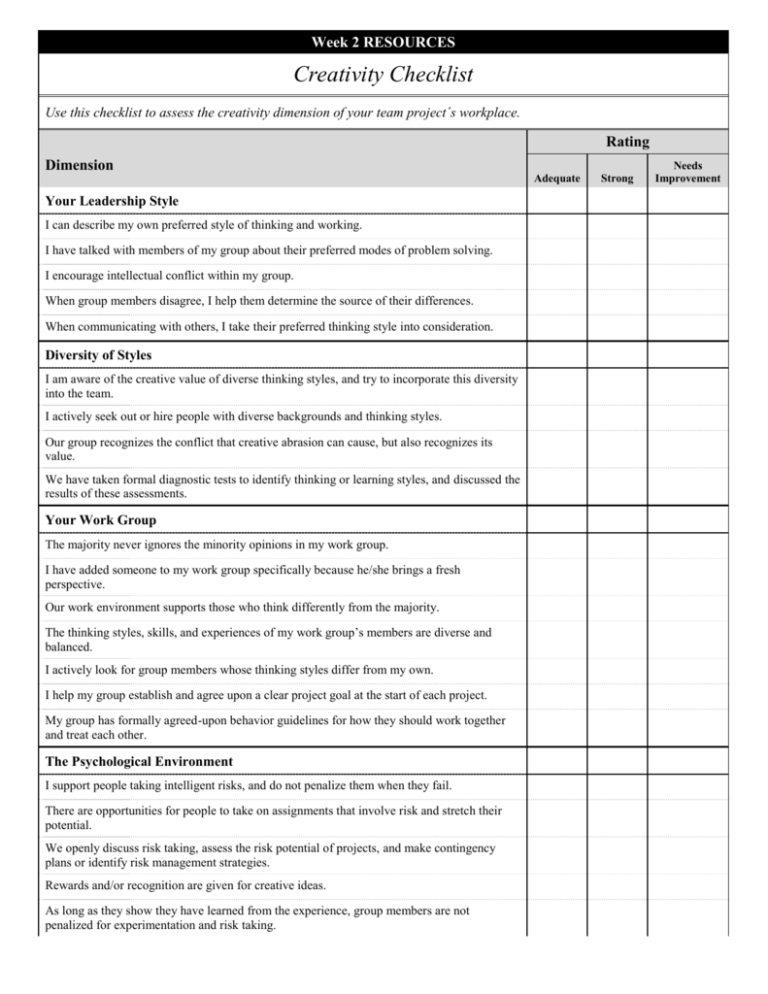
Week 2 RESOURCES Creativity Checklist Use this checklist to assess the creativity dimension of your team project´s workplace. Rating Dimension Adequate Your Leadership Style I can describe my own preferred style of thinking and working. I have talked with members of my group about their preferred modes of problem solving. I encourage intellectual conflict within my group. When group members disagree, I help them determine the source of their differences. When communicating with others, I take their preferred thinking style into consideration. Diversity of Styles I am aware of the creative value of diverse thinking styles, and try to incorporate this diversity into the team. I actively seek out or hire people with diverse backgrounds and thinking styles. Our group recognizes the conflict that creative abrasion can cause, but also recognizes its value. We have taken formal diagnostic tests to identify thinking or learning styles, and discussed the results of these assessments. Your Work Group The majority never ignores the minority opinions in my work group. I have added someone to my work group specifically because he/she brings a fresh perspective. Our work environment supports those who think differently from the majority. The thinking styles, skills, and experiences of my work group’s members are diverse and balanced. I actively look for group members whose thinking styles differ from my own. I help my group establish and agree upon a clear project goal at the start of each project. My group has formally agreed-upon behavior guidelines for how they should work together and treat each other. The Psychological Environment I support people taking intelligent risks, and do not penalize them when they fail. There are opportunities for people to take on assignments that involve risk and stretch their potential. We openly discuss risk taking, assess the risk potential of projects, and make contingency plans or identify risk management strategies. Rewards and/or recognition are given for creative ideas. As long as they show they have learned from the experience, group members are not penalized for experimentation and risk taking. Strong Needs Improvement The Physical Workspace Our workspace includes stimulating objects such as journals, art, and other items that are not directly related to our business. I have made changes to our physical workspace to improve communication and creative interaction. I provide group members with a wide variety of traditional and nontraditional communication tools (e-mail, whiteboards, crayons and paper, etc.). Group members are encouraged to design their workspaces to reflect their individuality. Our workspace includes both areas for boisterous interaction and areas for quiet reflection. Bringing in Outsiders or Alternative Perspectives Our group makes visits to people outside the division or organization in order to find different perspectives and ideas. Our group has observed customers actually using our product or service in their own environment. Our group has observed our customers’ customers using our product or service in their own environment. I have arranged for speakers from other industries to come talk to, or work with my group. Our group has observed people using competitors’ products or services. Our group has benchmarked the functions and characteristics of our products, services, or internal processes against an industry other than our own. Promoting Group Convergence I encourage group members to bring up and discuss non work-related subjects when these subjects interfere with work. When a project has been completed, I hold a debrief meeting to determine specifically what to do differently (or the same) the next time. When I hold a debrief meeting, I always make sure that all members can be present. When my group is stuck on a problem, I make sure they get “down time,” or time off, to step back, relax, and allow their subconscious minds to work. At the end of a project, I provide a way for my group to celebrate and rejuvenate. Project schedules allow enough time for group brainstorming and discussion of ideas. Adapted from Managing Groups for Creativity and Innovation, Dorothy Leonard.
